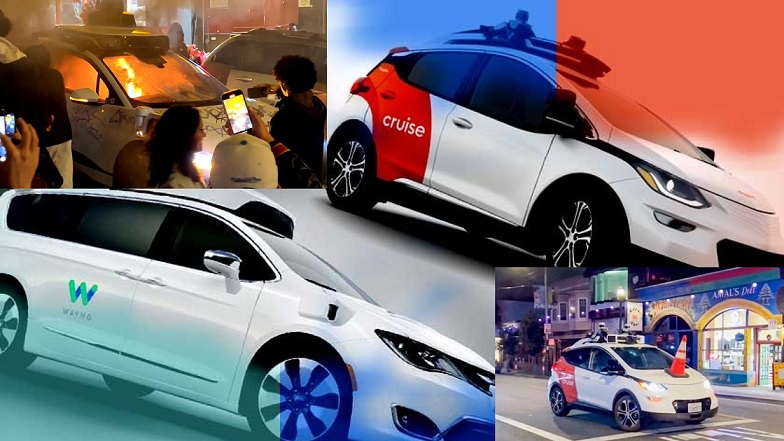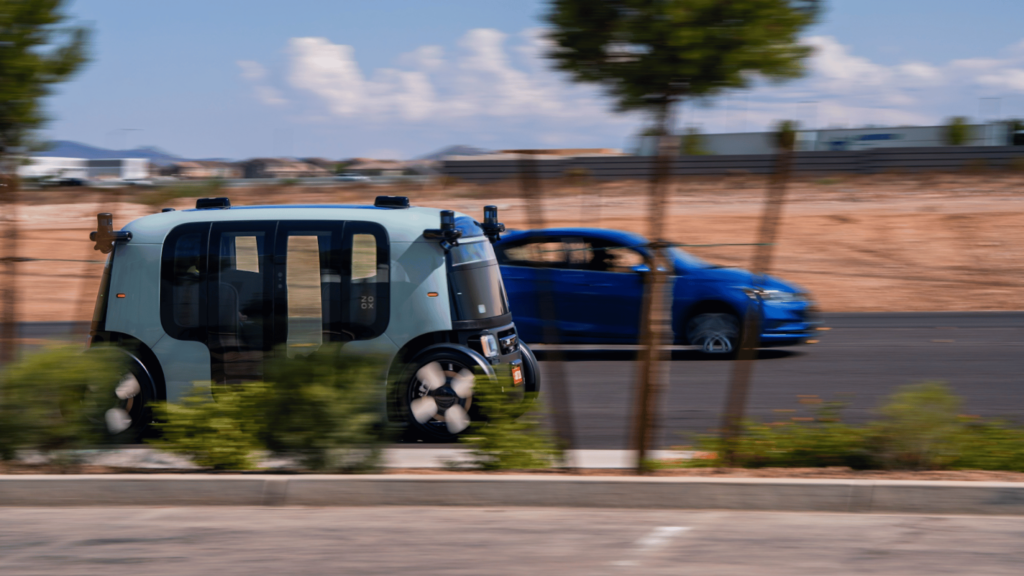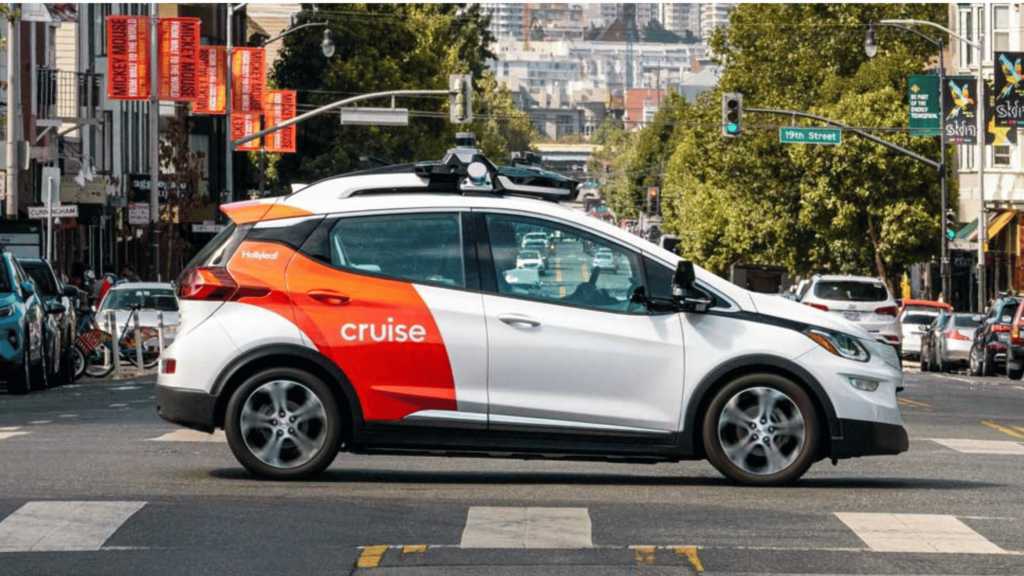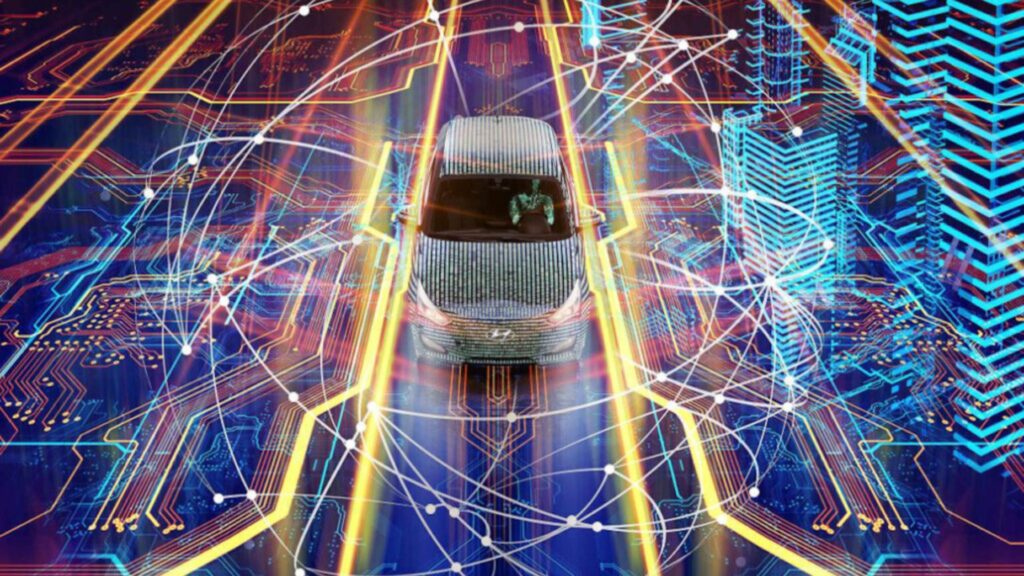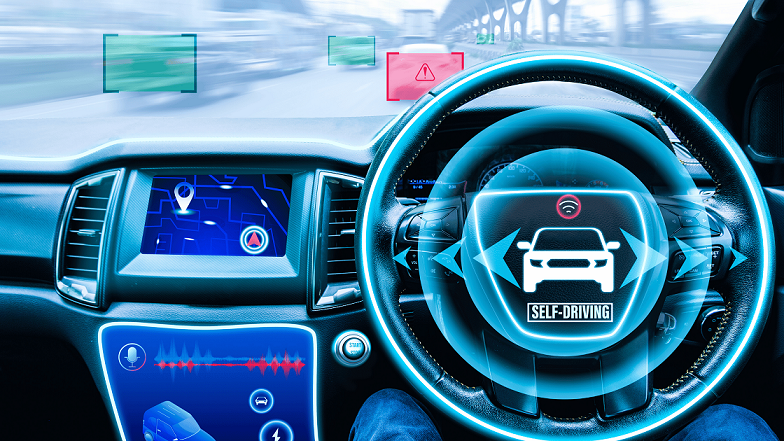- On the evening of February 10, 2024, a Waymo robotaxi was attacked by a crowd in Chinatown, San Francisco. The vehicle was surrounded, its windows smashed, and it was covered in graffiti. A lit firework was thrown inside, igniting a fire that completely destroyed the vehicle. Fortunately, there were no passengers inside at the time, and no injuries were reported.
- In July 2023, Activists with the group “Safe Street Rebels” started a symbolic protest by placing traffic cones on Cruise robotaxis to disable their sensors. This act effectively immobilized the vehicles and raised questions about pedestrian safety and public acceptance of autonomous vehicles. This activity has persisted intermittently, gaining traction on social media platforms.
Autonomous vehicle vandalism has become a significant issue, ranging from physical damage to vehicles, such as broken cameras and sensors, to software interference attempts. According to a 2023 report by The New York Times, residents frustrated with the proliferation of robotaxis have resorted to disabling these vehicles by placing traffic cones on their hoods or tampering with external hardware. These acts of defiance stem from concerns over job displacement for human drivers, traffic congestion, and unresolved safety concerns.
A Timeline of Vandalism
By exactly 9 PM on February 10, 2024, a Waymo vehicle was navigating Jackson Street when it became surrounded by a crowd. Its windows were smashed, and a lit firework was thrown inside, completely setting the car ablaze. Firefighters responded to the scene as the vehicle was engulfed in flames. A nearby restaurant worker called the police upon witnessing the fire.
This incident marked a significant escalation in public hostility towards autonomous vehicles, reflecting broader frustrations with their presence on city streets.
In an event similar to the cone disruption of Cruise AVs, a vandal was filmed attacking a Cruise robotaxi with a hammer or pickaxe in San Francisco. The individual caused extensive damage to the vehicle’s cameras, body panels, and lidar sensors. While the vehicle was empty at the time, the act highlighted growing tensions between locals and autonomous vehicle companies. Cruise reported the incident to law enforcement.
In September 2024, videos surfaced showing men blocking a Waymo vehicle and harassing a female passenger who was attempting to use the service. This incident raised significant concerns about the safety and comfort of passengers in autonomous vehicles, as the Waymo robotaxi stopped and left the passenger feeling trapped until the aggressors dispersed.
Waymo further reported more severe acts of vandalism, including slashed tires and damaged vehicles. In one notable case, a San Francisco resident, Ronaile Burton, was accused of slashing tires on 19 Waymo vehicles over several days, causing approximately $22,000 in damages. Another incident involved an Oakland resident, Konstantine Nikka-Sher Piterman, intentionally striking a Waymo vehicle twice with his Tesla on March 19, 2024. The complaint alleges Piterman ran a stop sign on Division Street near Vermont Street, accelerated to catch up with the robotaxi at Division’s intersection with Ninth Street, then hit it from behind.
When the robotaxi pulled over, Piterman allegedly struck it again before threatening a Waymo team member who responded to the crash.
In July 2024, police began a manhunt after a suspect was filmed blocking a Waymo vehicle and shouting at it. The suspect later attacked a disabled man, causing him to fall and fracture his skull.
In September, videos from a tagging spree against three Waymos went viral on social media. Days after the spree, a tech worker’s solo SoMa ride was interrupted by cat-calling creeps who blocked the robotaxi in an attempt to get her phone number.
A TikTok went viral in October, where a group of passengers said they were “jumped” by a gang who spray-painted the robotaxi’s windows Saturday around 7:30 p.m. on Mission Street between 21st and 22nd.
The San Francisco Standard reports that usually what raises the fear factor more during these incidents is that the Waymo often stops dead, leaving you captive inside until the aggressors leave. Fortunately, the car automatically locks the passenger inside, shielding them from the aggressors.
Driverless Taxi Vandalism: What is the Cause?
Autonomous vehicle vandalism (aka “robotaxi bullying”) is a rising trend in the AV space. Several factors have been identified as responsible for this malaise. Let’s look at them below:
Public Distrust and Fear
Public distrust in autonomous technology is a key driver of vandalism. This skepticism often translates into frustration, particularly in cities where these vehicles are being tested en masse.
While the autonomous vehicle industry is not without its challenges, several AV companies, like Waymo, Cruise, Gatik, Motional, etc., have upped the ante regarding safety, ensuring that autonomous vehicles are safe enough for everyone to use.
Labor Displacement Concerns
The threat to jobs posed by AVs is a major source of contention. Taxi drivers and rideshare operators see autonomous taxis as direct competitors, exacerbating tensions. A 2024 report by the American Federation of Labor and Congress of Industrial Organizations (AFL-CIO) estimated that autonomous vehicle adoption could displace over 300,000 driving jobs by 2030.
Urban Operational Challenges
AVs often operate in dense urban areas, where their cautious driving algorithms can inadvertently cause traffic disruptions. Residents and drivers in these areas sometimes view AVs as obstacles rather than solutions, which can fuel retaliatory actions.
How Waymo and Cruise are Fighting Back
In response to the vandalism threat, Waymo and Cruise have implemented various countermeasures, from lawsuits to technology upgrades.
- Development of Detection Systems
Cruise’s parent company, General Motors (GM), has filed a patent for a system designed to detect and respond to “adversarial behavior” from pedestrians. This system includes an “adversarial intent algorithm” that assesses the threat level posed by nearby individuals. Depending on the assessment, the robotaxi can take several actions:
- Auditory Warnings: The vehicle may issue verbal warnings to pedestrians displaying aggressive behavior.
- Route Alteration: If a threat is detected, the robotaxi can choose to find an alternate route to avoid confrontation.
- Alerting Authorities: The system can notify law enforcement if it detects significant threats, ensuring timely intervention in case of vandalism or aggressive actions against the vehicle.
Waymo has a similar system in which the vehicle can warn a pedestrian, emit a siren, or take evasive maneuvers, such as finding a different route. It can also capture images and videos and report offenders to the authorities.
- Prosecution of Vandalism Cases
Following incidents of vandalism, such as the tire slashings that resulted in multiple charges against an individual, Waymo has pursued legal action to hold offenders accountable. This includes working closely with law enforcement to ensure that those who damage their vehicles face appropriate consequences. Waymo anticipates the action will deter future incidents.
- Recovery of Damages
Cruise and Waymo have expressed their commitment to recovering damages incurred from vandalism incidents. For example, several offenders have been taken to court and are set to pay for damages they had inflicted on the robocars. This proactive approach not only seeks financial restitution but also reinforces the message that such behavior will not be tolerated.
Community Engagement and Education
To further stem the tide of driverless taxi vandalism, AV companies like Waymo and Cruise must, as a necessity, work with local governments, law enforcement, and top voices in the AV space to help engage and educate the public about the benefits of autonomous vehicles, creating a safer environment for robotaxis and the community. This collaboration may involve sensitization and speaking engagements, discussing regulations that protect autonomous taxis, or implementing measures that enhance public safety during events where tensions may arise.
Related:
Women in the U.S. are Turning to Driverless Taxis Over Rideshare Services. Here’s Why
Autonomous Vehicle Roundup: October 2024
15 Key Things to Look for from New Robotaxi Players
Top 5 US Autonomous Vehicle Stocks You Should Buy in 2025

I’m Dr. Brandial Bright, also known as the AVangelist. As a dedicated and passionate researcher in autonomous and electric vehicles (AVs and EVs), my mission is to educate and raise awareness within the automotive industry. As the Founder and Managing Partner of Fifth Level Consulting, I promote the adoption and innovation of advanced vehicle technologies through speaking engagements, consulting, and research as we progress to level 5 fully autonomous vehicles.

